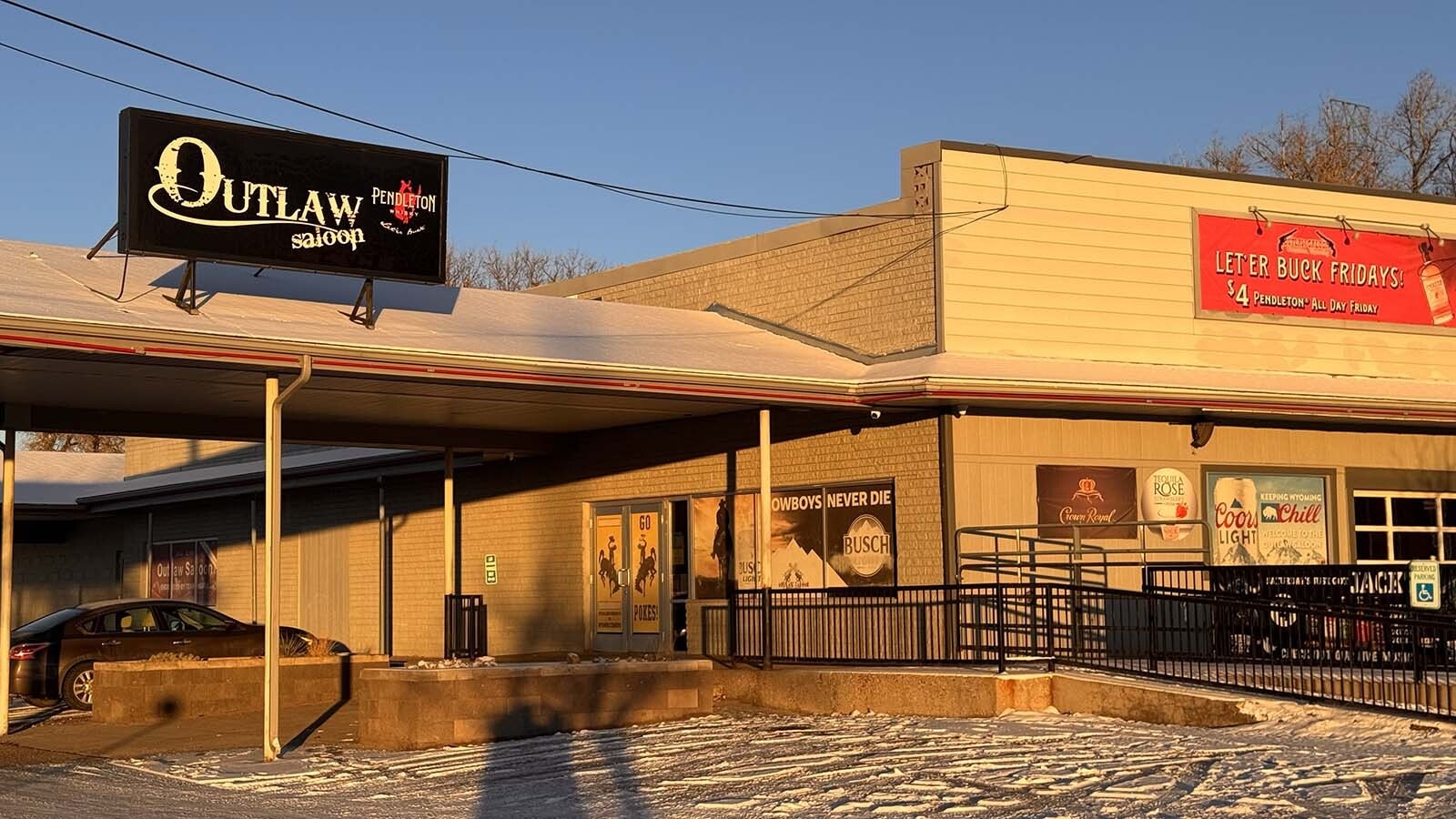Wyoming's historic frontier forts are links to America's move westward and the Old West.
Fort Bridger, built in 1843, is a popular tourism destination, and the tales associated with it continue to inspire television shows, movies and historical reenactments. Fort Caspar was built 15 years later and became one of the most historically important military outposts in the territory.
One of the last notable forts built in Wyoming was Fort Washakie in 1869, which also was known as Camp Augur.
Now 156 years later, a new frontier fort is being built — Fort Sublette.
The Museum of the Mountain Man in Pinedale will spend the winter building this new historic fort. Then dozens of mountain men will return in July 2026, when they hope Fort Sublette will be ready and waiting for them.
A handful of mountain men and museum trustees broke ground on the 1830s-era palisade fort, which is the museum's most significant expansion since its 1990 opening. Once completed, it will be a living history experience for visitors to see the tricks of the trade used by the West's legendary mountain men.
"We're going to build this fort and have it staffed all summer long," said Clint Gilchrist, executive director of the Museum of the Mountain Men. "People can come inside and see the artifacts, then they can go outside and see how they're used."
The museum already hosts the Green River Rendezvous and Living History Days every summer, which are among its most popular programs. Gilchrist hopes the 100-by-100-foot fort will be finished in time for next summer's events and the thousands of people who will attend.
"That's our hope," he said. "Realistically, we'll still be working on it through next summer to have it open fully by 2027, but we may have some limited use of Fort Sublette during Summer 2026."
Living History
The Museum of the Mountain Men is the only museum dedicated to the mountain men and the heyday of the Rocky Mountain fur trade in the mid-1800s. The crown jewels of its collection include Jim Bridger's rifle, a 20-foot buffalo-hide tipi, and the oldest complete sheep-horn bow in existence.
Artifacts are amazing, but Gilchrist said the museum has found its greatest success with its "living history" interpretive programs. Presentations and demonstrations about mountain men and their equipment, guided by visiting members of the American Mountain Men, have resonated with visitors in ways that museum displays can't.
"They just bring the history to life better than an artifact can," he said. "We've received such a great response from our Green River Rendezvous and Living History Days for 25 years, and visitors, kids, and schools just love it."
The Fort Sublette expansion was envisioned as an interactive space to facilitate more living history programs. Visitors could encounter authentically dressed mountain men living and working in a setting that would be very familiar to their historical counterparts for an entire season, rather than a select few days.
"We partner with the American Mountain Men for our summer events, but those are only three or four days each," Gilchrist said. "We don't have living history demonstrations the rest of the time. When we build this fort, we can have living history demonstrations all summer."
The Rendezvous
Pinedale was an important spot on the map for the mountain men of the 1800s. Mountain men lived and worked out of the area year-round, rather than making the multi-month trip back east.
The supply center for the young men trapping fur in the mountains was St. Louis, Missouri, which was a two-to-three-month trip each way," Gilchrist said. "It makes no sense for them to go back and forth."
Every summer, the mountain men would meet a supply caravan from St. Louis at a designated spot that changed each year. That annual event was known as "the Rocky Mountain Rendezvous."
The first Rocky Mountain Rendezvous was held at the junction of the Laramie and North Platte rivers in 1815. Later rendezvous were held in Utah and Idaho, but Wyoming was the most popular place for the mountain men to meet up, with rendezvous in Riverton, Lander, and Granger.
"There were 16 rendezvous from 1825 to 1840, and six of them were held just outside of Pinedale," Gilchrist said. "This was a very prominent spot for the Rocky Mountain fur trade, which is why it made sense to build a museum here."
William Sublette, for whom Sublette County was named, was an agent and eventual co-owner of the Rocky Mountain Fur Company. He was a legendary mountain man and fur trader who first entered the Green River Valley in 1834 and later established the route that became known as the Oregon Trail.
Sublette founded Fort William, which later became Fort Laramie, in 1834. He always intended to build a fort near Pinedale but never did.
With a $450,000 donation from the Gooch Family and a $225,000 matching grant from Sublette County, Gilchrist said the museum is ready to build Sublette's fort. It's been over 190 years since he envisioned it, but better late than never.
"We set out to build the fort that Sublette would have built, if he'd have built one," he said.
Mountain Men' R Us
The designs for Fort Sublette are an extensive "amalgamation" of historic forts from the 1830s. Gilchrist said Fort Laramie and other historical forts were studied to create a period-appropriate layout for the expansion.
"We're using modern tools, but we'll build it to look like and be like what it was at the time with the same sort of materials," he said. "Everything will be built out of logs, and there won't be any glass in the windows and doors. We're trying to keep it as period correct as practical."
Within the 10,000-square-foot interior will be several cabins and blockhouses. According to Gilchrist, they'll contain everything a mountain man would need for his profession.
"There'll be areas to demonstrate blacksmithing, trapping, and skinning," he said. "We'll have a fur press to show how they packaged all their furs, and a fur room to show how they stored them."
Members of the American Mountain Men will occupy these spaces during the summer, demonstrating how they used their tools in their trade. They'll show visitors around their living quarters and show how they made clothes, tents, and tipis in the tailor shop.
The space that Gilchrist is most excited about is the trade room. Here, visitors will try their hand at one of the most essential skills of the mountain men: bartering and trading.
"People will be able to go in and trade, like mountain men would have come to trade for beaver," he said. "It'll be stocked with period trade goods, and they'll be able to trade and take real trade goods home with them."
There will also be opportunities for interpretation and education about indigenous history and culture. Gilchrist said the construction of Fort Sublette will provide more opportunities to share the American Indian perspective on the Rocky Mountain fur trade.
"At the time, Indian women were hired to build tipis and other things in the tailor shop, so we're going to try to reinterpret that," he said. "We'll also do other activities like teaching Plains Indian Sign Language."
There are also plans for firearms demonstrations, showcasing period-accurate weapons. After all, a fort's not a fort without an arsenal.

New Heights For Mountain Men
Fort Sublette is the first phase of the Museum of the Mountain Men's Bicentennial Expansion. They have a master plan for several other projects and expansions leading up to the bicentennial of the first Rocky Mountain Rendezvous in 2040.
"We're planning a major Plains Indian expansion, a state-of-the-art collections facility, and the Alfred Jacob Miller Art Gallery with significant art associated with mountain men in the fur trade," Gilchrist said.
Expanding the museum's galleries and facilities is exciting, but Gilchrist and many others are most excited about the opportunities Fort Sublette will offer future visitors. The mission of the Museum of the Mountain Men is to preserve the history of the mountain men, and Fort Sublette's living history will make that history more engaging and exciting than ever before.
"It is this generation's turn to build on the great platform our predecessors worked so hard for, leaving a stronger institution that will last for the next centennial and spreading the story of the mountain men," Gilchrist said.
If all goes according to plan, the gates of Fort Sublette will be open in time for the next Green River Rendezvous on July 9-12, 2026.
Andrew Rossi can be reached at arossi@cowboystatedaily.com.














